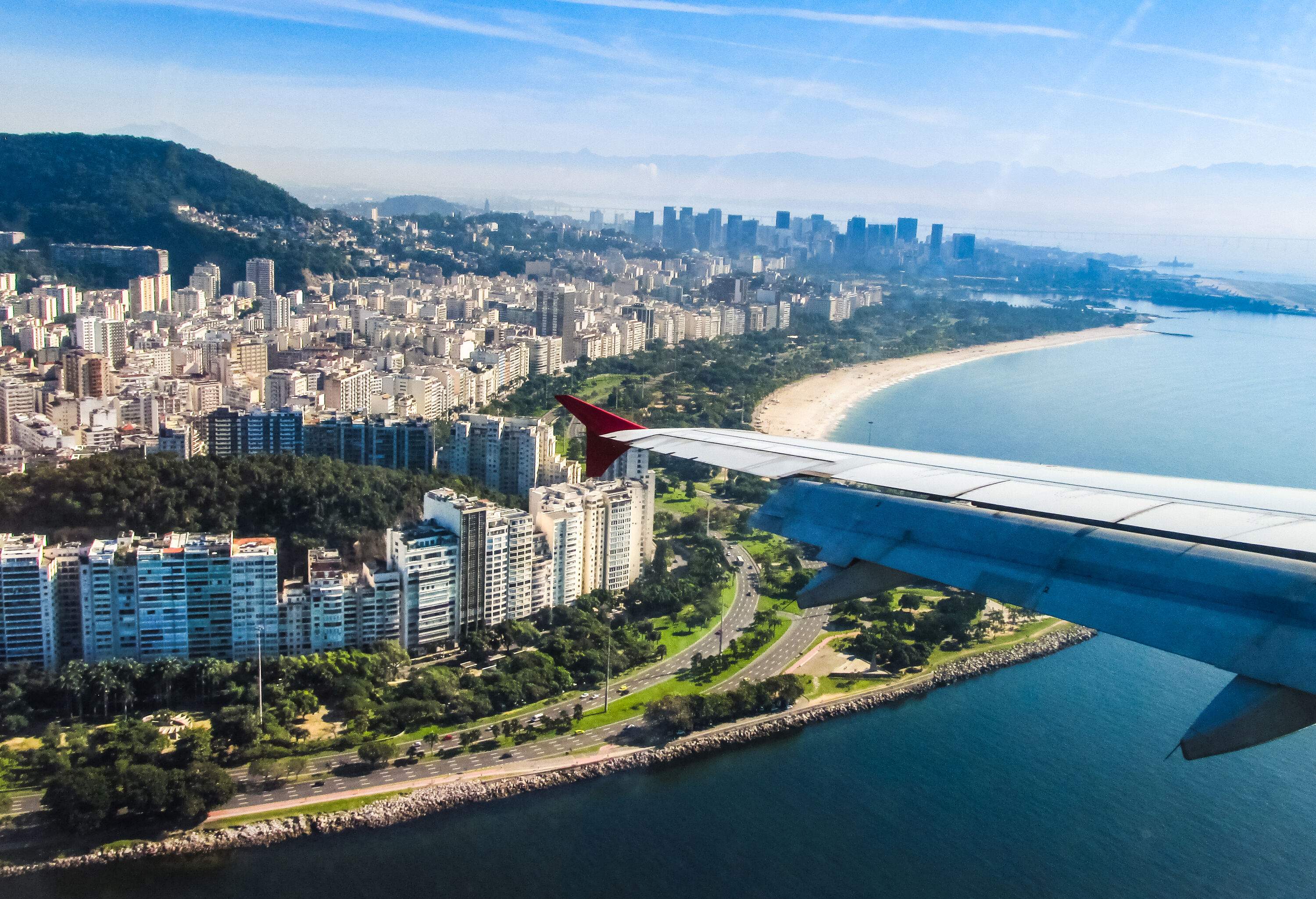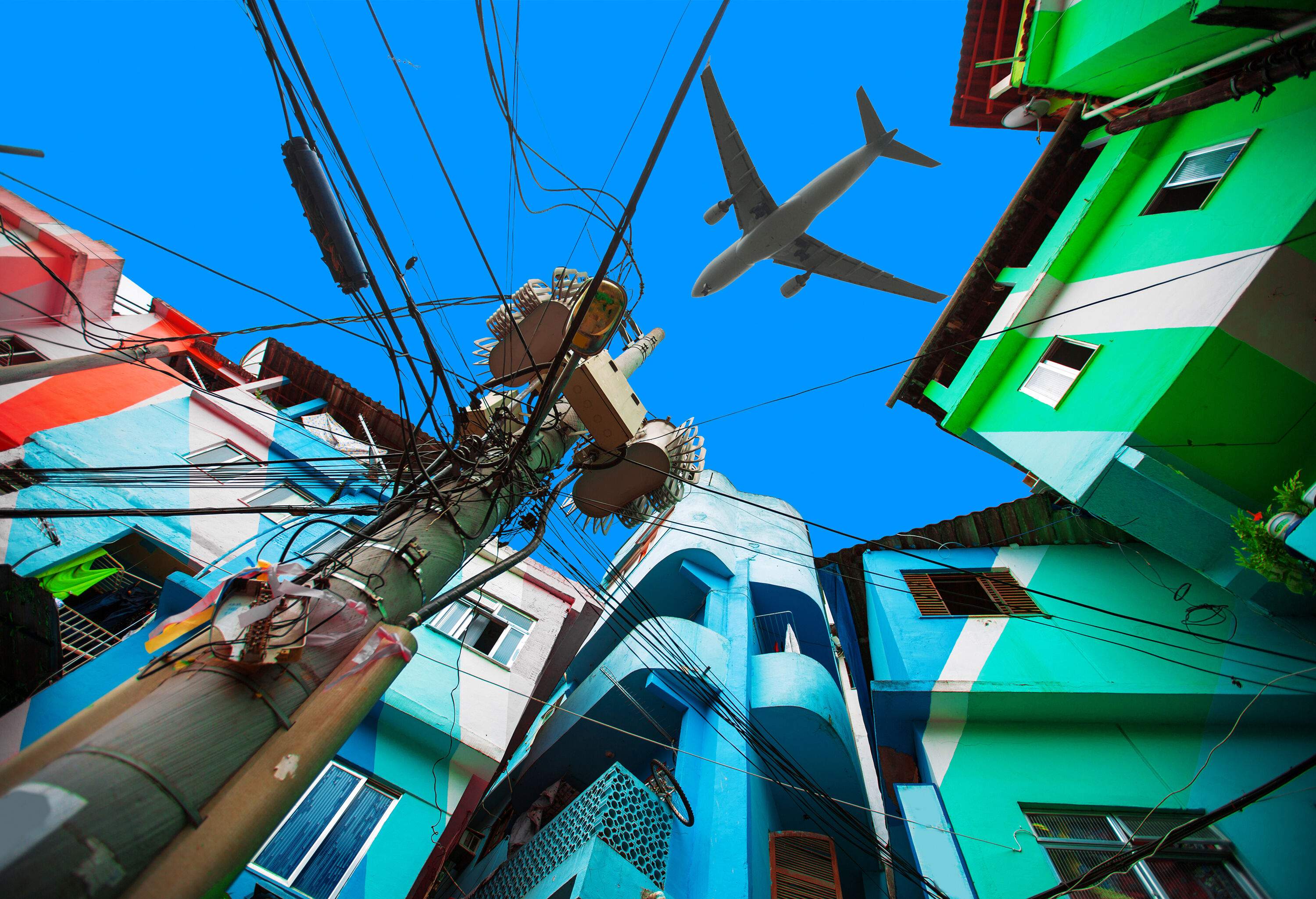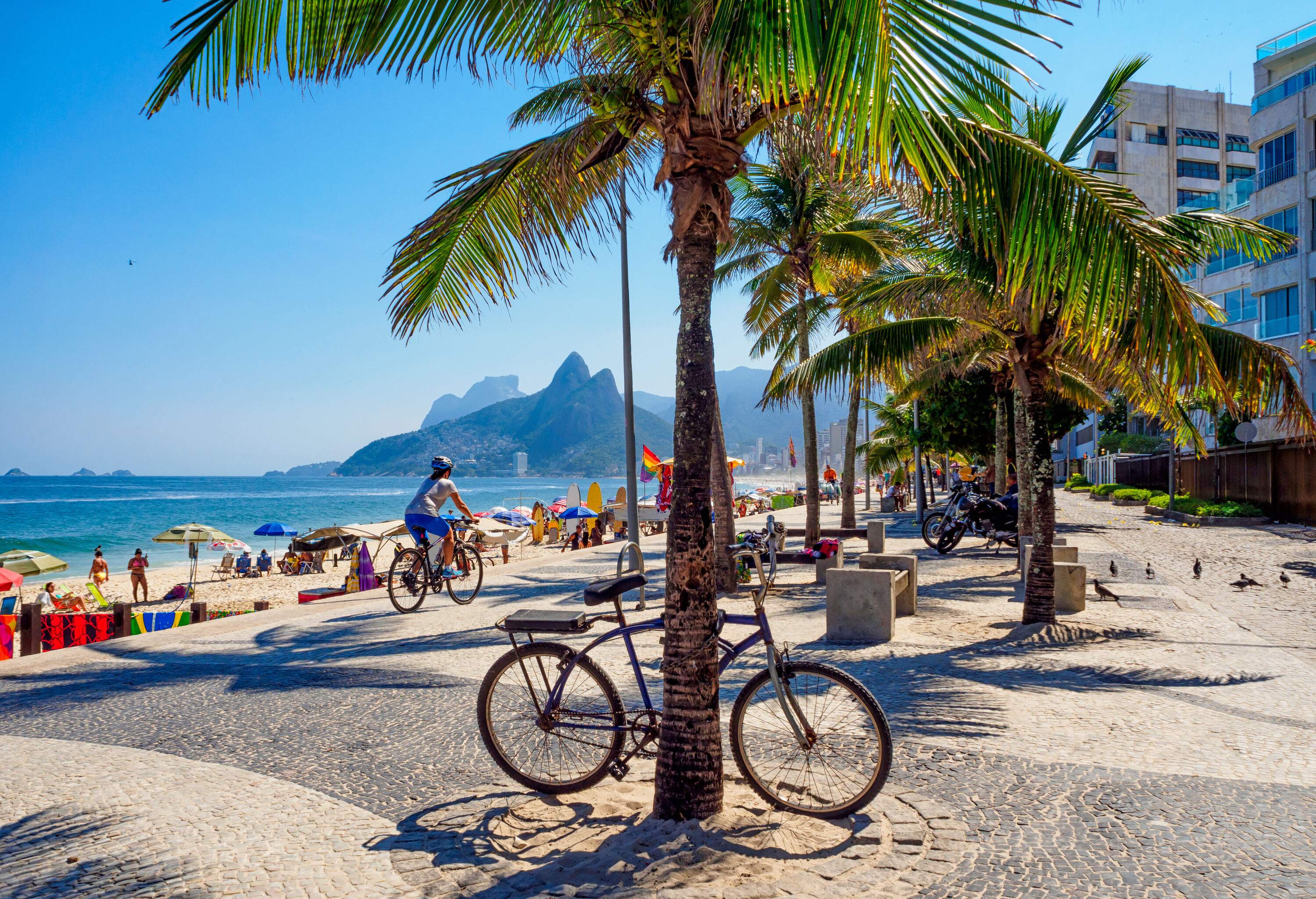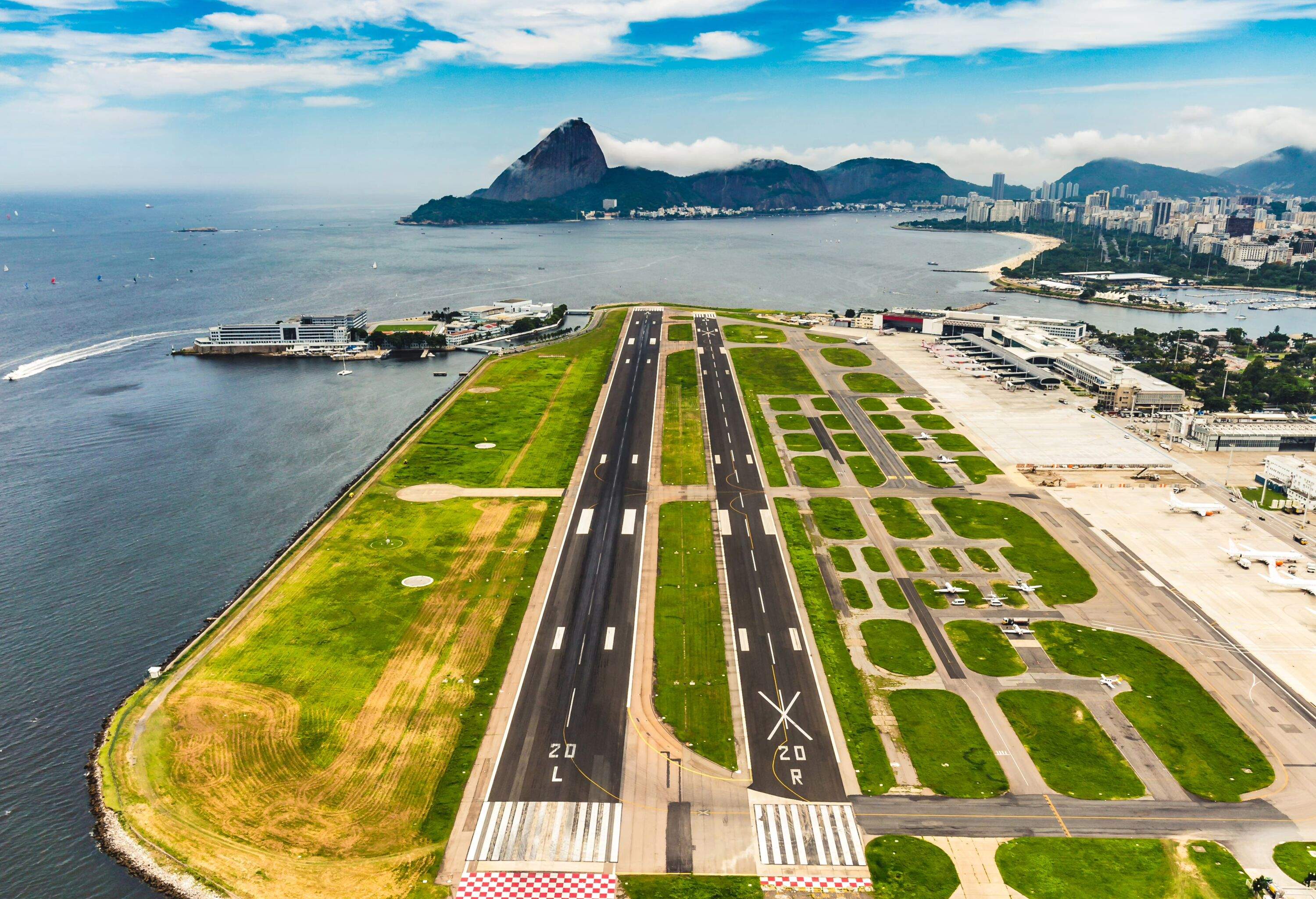If you happen to be flying to Rio de Janeiro soon, it’s worth knowing there are two airports to choose from. Santos Dumont Airport (SDU) is more focused on domestic flights, while Rio de Janeiro–Galeão International Airport (GIG) is mainly used for international routes.
I’ve been to Rio many times, both to visit Ipanema and Copacabana beaches as well as to enjoy the gorgeous sunshine. Whenever I’ve visited, I’ve mostly flown into Galeão (or GIG) and found it marvelously convenient.
Santos Dumont airport (SDU)
You’ll get a decidedly scenic landing at Santos Dumont airport (SDU), with views across the water and Sugarloaf Mountain. This is, however, Rio’s secondary airport, and is therefore on the smaller side. It was built in the 20th century and has been extended many times. The airport has a restriction on the number of planes per hour, but it remains rather busy for an inner-city airport.
Location
This airport is literally adjacent to Downtown Rio de Janeiro, which is less than a mile away, while Ipanema Beach is about eight miles south. The airport’s location means that it’s easy to get around Rio from here, and it also makes it a beautiful place to spend some time. From the sky, as well as from the airport, you get sweeping views across the bays and the famed surrounding mountains.
How to get there
There are a few ways to get around Rio de Janeiro from SDU. The Rio light rail has a station right at the airport, which connects the terminal to the downtown part of the city and beyond. There are two rail systems to choose from: Ramal Belford Roxo and Ramal Santa Cruz, which both end at Central Do Brasil station but follow different routes. Simply follow the signs at the airport, and you’ll also find a map showing the entire routes for both.
There’s also a subway system that’s very easy to navigate, and this is my personal preference. The station at the airport is called Cinelândia (lines 1, 2, 4) and is just one minute walk from the terminal.
Of course, there are also taxis you can hail right on Olympic Boulevard, as soon as you come out of the terminal. These aren’t very expensive and, in true Rio spirit, the drivers are always friendly. Lastly, some buses can take you to the central bus station and around town. You can navigate these by following the signs – make sure you check the map for stops and routes.
Terminals
There are just two terminals at this airport: one for arrivals and one for departures. The airport isn’t open 24 hours a day though, so it’s mostly only open when flights are coming in and out. Only a few airlines service this airport, including Passaredo, LATAM, GOL, Azul and Avianca. They mostly service domestic routes, but they also offer routes to a select few international destinations.
If you’re here for a layover or your flight is delayed, you can stay at the airport and enjoy the great views. But I’d recommend leaving the terminal, hopping on the subway and hitting the closest beach, Copacabana, or getting a coffee in the hip Botafogo neighborhood. This is a small airport without many services, so spending time in Rio is bound to be more rewarding.
Amenities
At the airport, you’ll find all the necessities, including ATM machines and banks (located landside in the arrivals hall). There are currency exchanges on both land and airside and if you want to do some shopping, you’ll also find a handful of souvenir stores. There’s also a medical assist area in the departures terminal, as well as a pharmacy. There are just four cafes in the departures area and one in the arrivals area – Kopenhagen is the one I’d recommend for a coffee and a little savory cheese snack.
What makes this airport special
The building itself is fantastic, a modernist masterpiece designed by MMM Roberto architects. Today the terminal is considered a national landmark, and it is featured in many architectural magazines.
Rio de Janeiro–Galeão International airport (GIG)

Rio de Janeiro–Galeão International airport (GIG) is the biggest airport in the fabulous city of Rio de Janeiro. The airport is partly named after a nearby beach, “Galeão”, which I feel perfectly captures the spirit of this vibrant, beach-loving city.
Location
Although this is a big airport, it’s a mere 12 miles from Downtown Rio de Janeiro. The airport is located on a small island, Governador Island, and also offers fantastic views as you land. This will probably be your arrival spot if you’re coming from further-flung destinations around the world, as most of the big airlines use this airport as their base in Rio.
How to get there

There are numerous ways to get to the airport, and they’re all fairly easy. One way is by taxi, which you can hail from anywhere in the city. They’re not very expensive and you’ll easily find one on the street – just look for a yellow or white taxi and make sure it’s an official one. The drive can take anything from 45 to 90 minutes, depending on traffic.
In my opinion, the fastest and most convenient way to get to the airport is by train. The SuperVia airport line takes 50 minutes and is very inexpensive. It will take you right to the Central Station. There are also airport buses you can take – look for the Costa Verde Bus Line, which takes over an hour to the center of town.
I’ve also used the metro, but it’s worth noting you have to connect to the bus system for the last part. To follow this route, take line 2 and get the bus at the Vicente de Carvalho subway station – it takes a few minutes extra to make this connection to the airport.
Terminals
GIG has two connected terminals, which are linked by a covered walkway via a travelator. You’ll find most of the international airlines at Terminal 2, including United and Delta. Terminal 1 is home to Azul and Flyways.
Amenities
This is a big airport that caters to massive amounts of people, so it has many of the amenities and services you’d expect to find. That includes ATMs, currency exchanges and banks (both terminals have multiple branches), as well as a car rental area right inside the terminal building. There are also plenty of food and drink options scattered around both terminals – try Galeão coffee shop for a cappuccino and a sweet treat. If you want to pick up some gifts and souvenirs, there are also several stores selling local products.
What’s special about this airport?
Besides the gorgeous location, on its own little island, this is a major airport in a massive city, but somehow the terminals are still super easy to navigate. It’s also not far from many of the city’s finest airport hotels and beaches. Before you know it, you’ll be out of the terminal and into the sun.
Rio de Janeiro airports: How to decide which one is best for you
You might be thinking, how to pick between these two airports. Don’t worry – this handy comparison will break down all the key points and help you make your decision:
| Santos Dumont airport | Santos Dumont airport | |
| Distance to city center | Less than a mile | Less than 12 miles |
| Ease for connecting to Rio | All modes of transport | Easy access via train |
| Flights available | Only a handful | All the major airlines |
| Shopping and dining | Very limited, but there is a lovely café | Fully stocked with everything you might need |
| Other things to think about | The airport is beautiful and great for domestic hops | Surprisingly easy to navigate for a major airport |
Before you fly
If you’re planning a trip to this fantastic city, check out KAYAK’s handy Rio de Janeiro guide for local tips and tricks. You can also learn about great Rio package deals and brush up on your long flight essentials. It’s also worth reading our airport guide ahead of your next trip, which is filled with useful advice.








